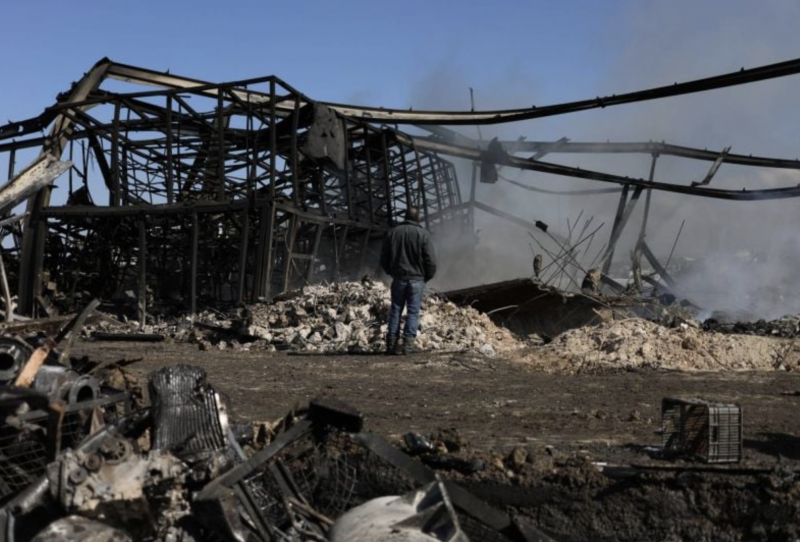
A man stands amid the debris of a generator factory on Feb. 21, 2024 in Ghazieh, south Lebanon, less than 48 hours after an Israeli bombardment. (Credit: Matthieu Karam/L'Orient-Le Jour)
Gray smoke billowed from the debris, while small flames stubbornly resisted the water and foam doused by the fire brigade on Monday evening.
The pungent smell of burning oil permeated the air.
Less than 48 hours after Israeli airstrikes targeted warehouses in Ghazieh, a few kilometers south of Saida, the aftermath of the attack was evident everywhere.
In a carpentry workshop housed in a hangar behind one of the targeted factories, an employee diligently swept up the debris scattered on the ground.
The only sound breaking the silence was the radio broadcasting the latest news.
On Feb. 19, just before 5 p.m., workers had recently departed their workplaces when fires erupted in two factories: Mohammad Khalifeh’s, specializing in generator assembly, maintenance and oil sales, and Ahmad Ghaddar’s cement works, situated one kilometer further south, opposite the motorway.
While the tragedy was averted, the airstrikes resulted in a dozen or so minor injuries.
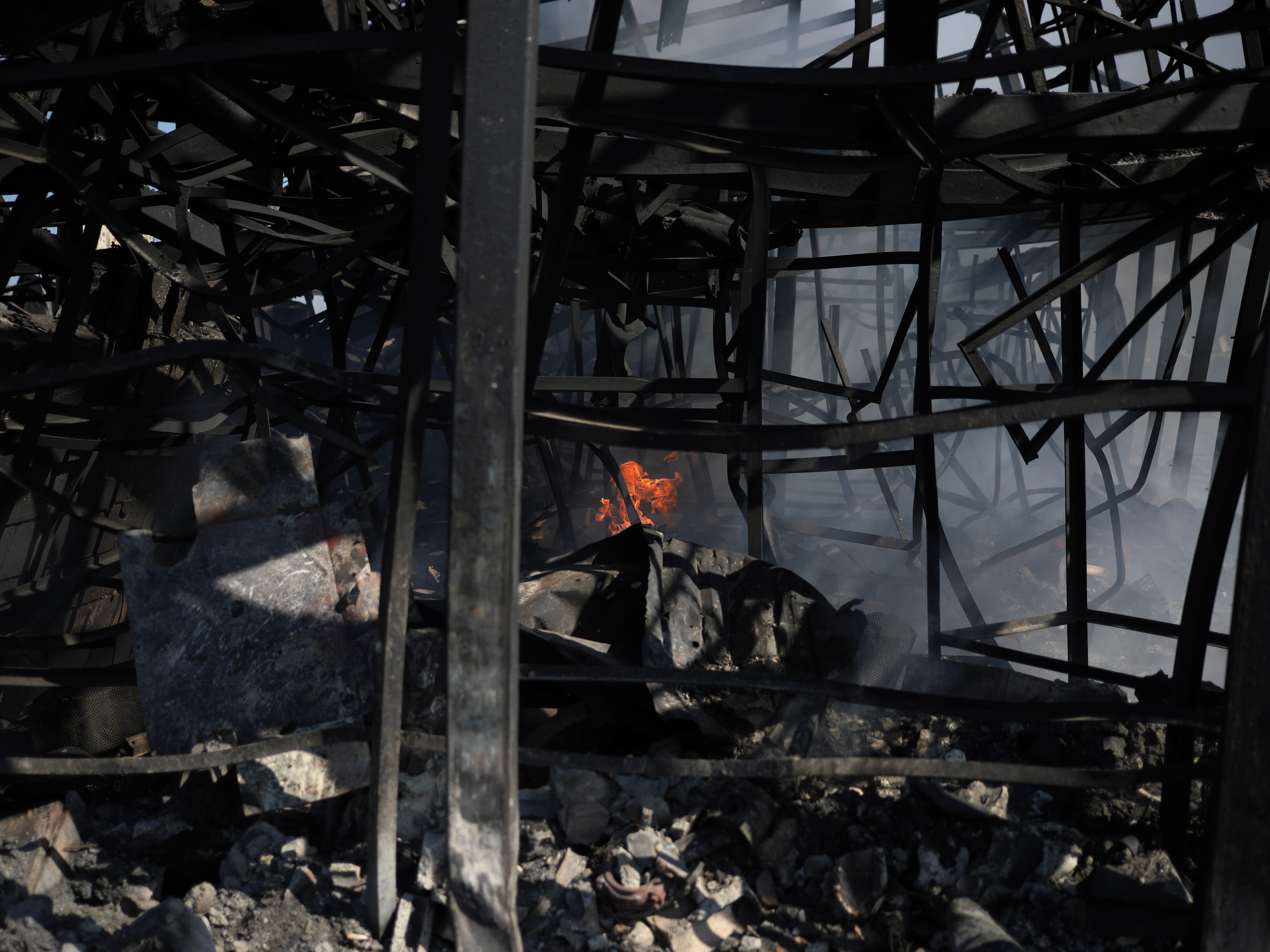 Fire in a hangar destroyed by an Israeli strike in Ghazieh, Feb. 21, 2024. (Credit: Matthieu Karam/L'Orient-Le Jour)
Fire in a hangar destroyed by an Israeli strike in Ghazieh, Feb. 21, 2024. (Credit: Matthieu Karam/L'Orient-Le Jour)
This marked the first instance of this industrial town, home to approximately 50,000 inhabitants, predominantly Shiite, being targeted since the beginning of the war in Gaza and southern Lebanon last October.
Typically, airstrikes have focused on border areas, with only a handful of targeted bombings and assassinations occurring in more distant areas.
The Israeli army said that they targeted “Hezbollah arms warehouses.”
However, both the owners and employees of the affected establishments, as well as local residents, vehemently refute this claim.
On the ground, verifying or disproving this assertion proved impossible.
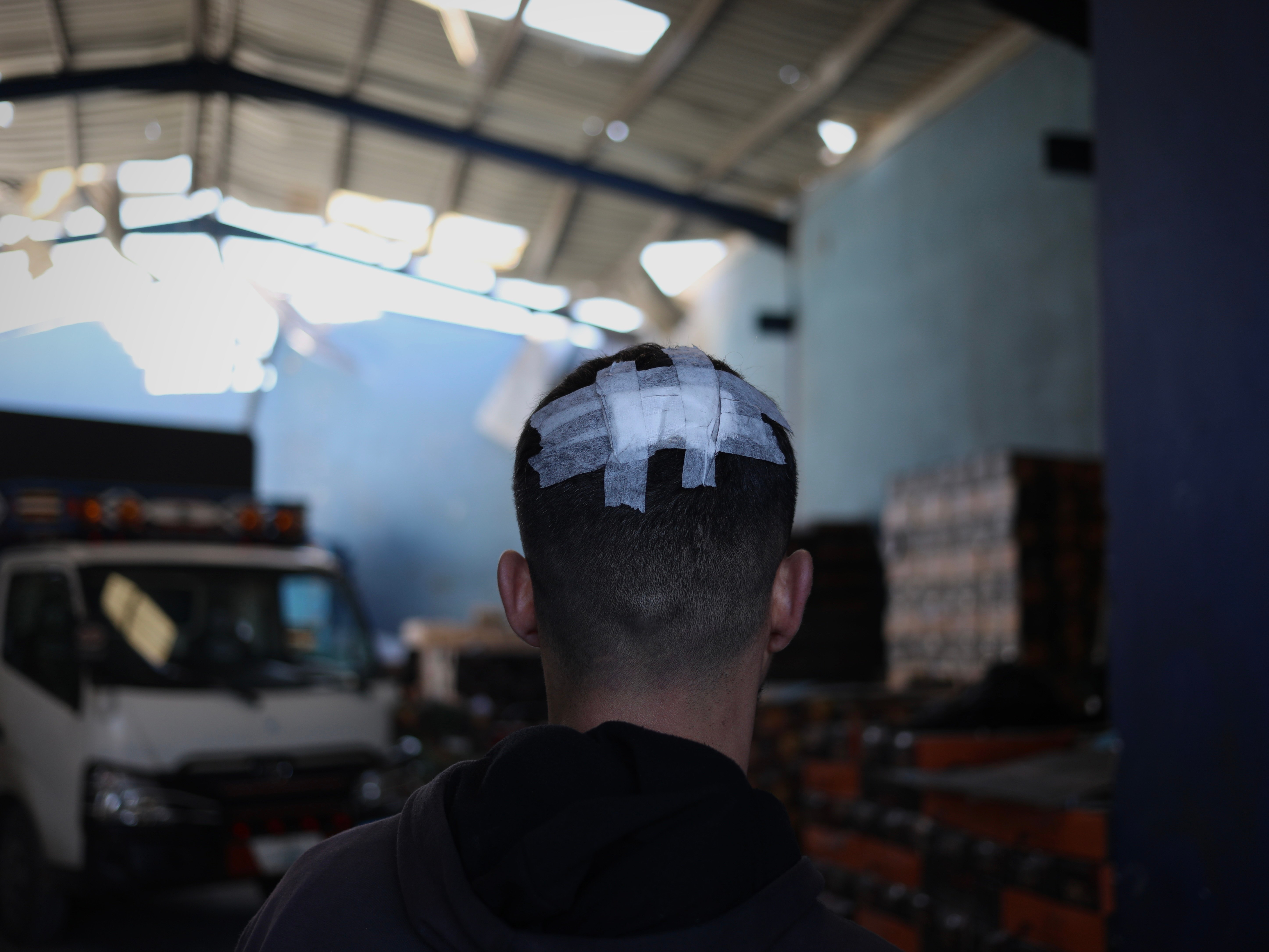 Bakr, a Palestinian employee injured by the Israeli strike on a factory in Ghazieh. (Credit: Matthieu Karam/L'Orient-Le Jour)
Bakr, a Palestinian employee injured by the Israeli strike on a factory in Ghazieh. (Credit: Matthieu Karam/L'Orient-Le Jour)
‘Where are the weapons?’
“I’ve been working here for eight years,” said Bakr, a 30-year-old Palestinian. “We store bags of coal in this shed. We were waiting for a shipment when the first missile hit.”
“I was sitting at the entrance to the hangar. The zinc from the roof and debris fell on top of me,” he added. “There was a second strike. But thank God I escaped.”
Bakr is from the Ain al-Hilweh refugee camp (a little further north) and had a bandage on the back of his head. Despite his injury, he was back at work the very next day.
“Where are the weapons?” he asked.
“There’s wood here, generators, coal — none of what they’re saying,” said Awad Moustapha, owner of a carpentry shop located in the shed next to Bakr’s.
Moustapha, in his thirties, rushed to the scene of the attack on Monday evening to help extinguish the flames.
“When I arrived, I didn’t see any evidence of this,” he said. “The press came to film it that evening. If there had been any military activity, the area would have been cordoned off.”
At the back of the hangars, one has to wade through oil-mixed mud to reach the site struck by “five missiles,” as reported by witnesses on the scene.
The company’s co-owner, Mohammad Khalifeh, in his 60s, arrived to inspect the clearance work, while a backhoe lifted the carcass of an irrecoverable pickup truck.
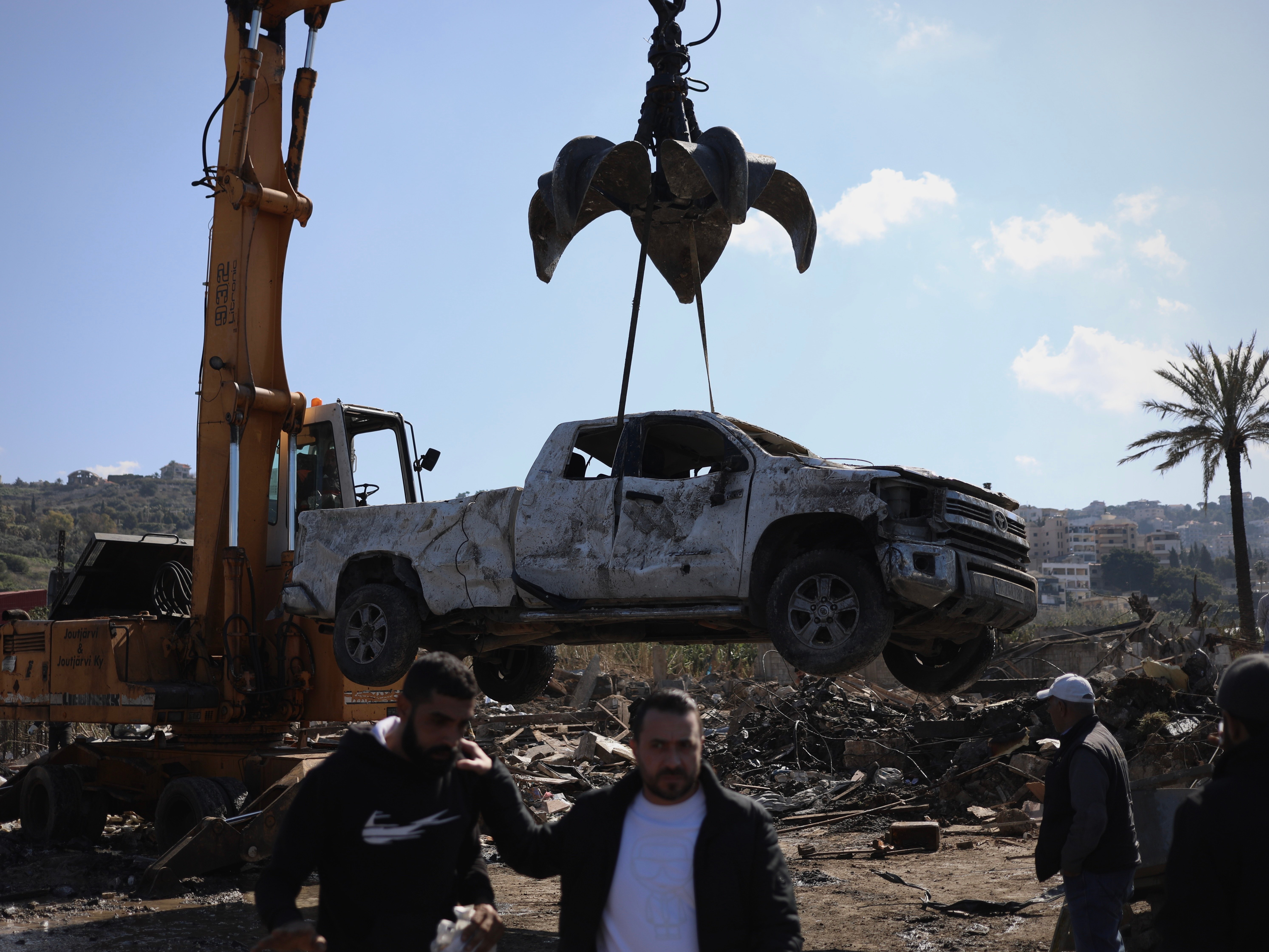 A backhoe lifts a pickup truck destroyed by one of the Israeli strikes in Ghazieh. (Credit: Matthieu Karam/L'Orient-Le Jour)
A backhoe lifts a pickup truck destroyed by one of the Israeli strikes in Ghazieh. (Credit: Matthieu Karam/L'Orient-Le Jour)
“We never imagined we would be targeted,” he said. “They always find pretexts, but we have nothing to draw attention to.”
“Our hangars are consistently open during these hours. They [the Israeli army] bomb anything tied to the economy that’s still operational,” he added.
A few 100 meters away, Ahmad Ghaddar’s open-air cement factory also suffered damage, estimated by its young owner to be “at least $2 million.”
Across from a building accommodating Lebanese, Syrian and Palestinian employees along with their families, a crater exceeding five meters in depth and around 30 meters in width vividly illustrated the intensity of the bombardment.
“There were multiple injuries, but thankfully no fatalities,” Ghaddar said. He added that there are no weapons in his factory.
“Film here and see if you find any weapons,” he said. “They [the Israeli army] aim to destabilize the economy, to displace people.”
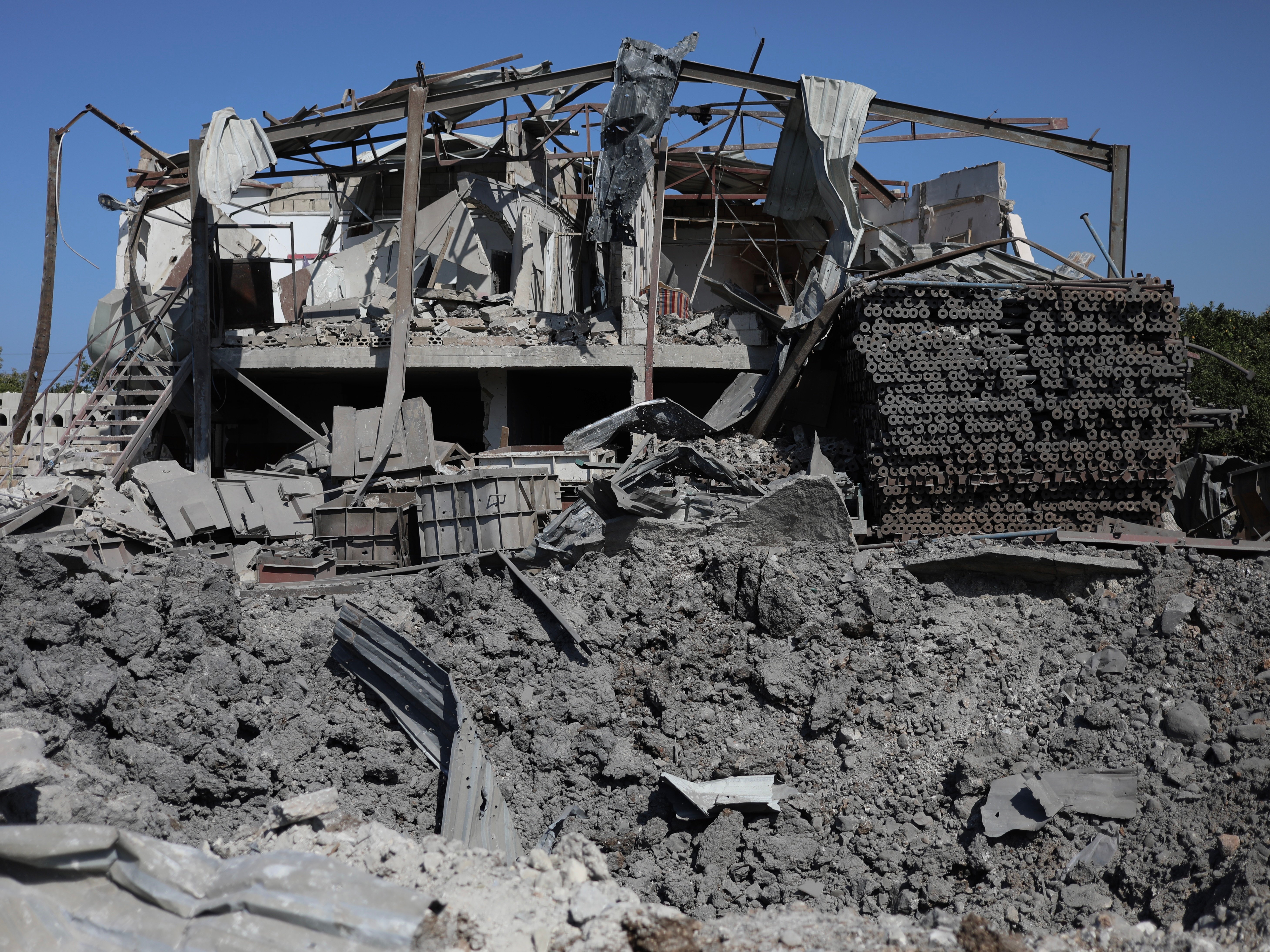 The crater caused by one of the Israeli strikes against a cement plant in Ghazieh. (Credit: Matthieu Karam/L'Orient-Le Jour)
The crater caused by one of the Israeli strikes against a cement plant in Ghazieh. (Credit: Matthieu Karam/L'Orient-Le Jour)
‘Pressuring the resistance’
For certain residents, the Israeli airstrikes carried a message not only to Hezbollah but also to the populace. Some analysts even interpreted it as an effort to sow division between the party and its supporters.
“None of us are affiliated with a political party. It’s possible that the aim is to exert pressure on the resistance. But these are just theories,” said Moustapha.
Khalifeh, on the other hand, appeared unconcerned about such a scenario: “It’s extremely challenging to create a divide between the population and the ‘resistance’ because we are the offspring of this soil.”
“We’re like a tree — you plant it here, it remains here,” he said.
“Not all residents are Hezbollah supporters. However, during times of conflict, everyone rallies behind the ‘resistance,’ whether they align with Hezbollah, Amal, or other factions,” said Hassan Ghaddar, chairman of the Ghazieh municipal council.
A few kilometers away, beneath the main square adorned with portraits of Hezbollah “martyrs” and Amal flags, Ali Haidura, 71, has experienced “all the wars” in the town, notably the July 2006 war when Israeli airstrikes resulted in the deaths of 26 civilians on Aug. 7 and 8.
In his toy shop, which has been around for three decades, a former primary school teacher, whose desk featured a small portrait of Shiite party leader Hassan Nasrallah, cautioned about potential erosion in public support, particularly as there’s scant hope for compensation from a cash-strapped state.
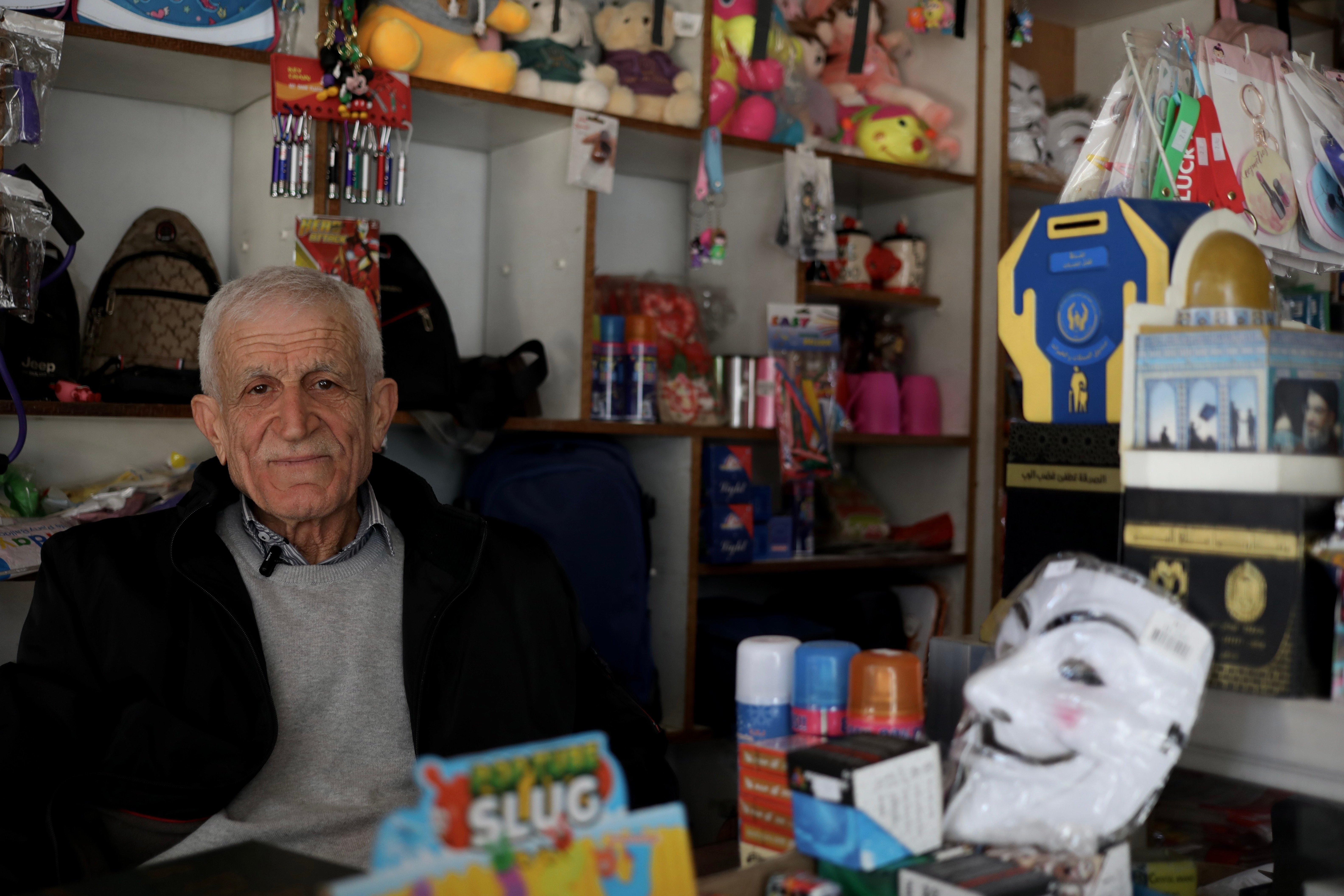 Ali Haidoura, 71, in his toy store in Ghazieh. (Credit: Matthieu Karam/L'Orient-Le Jour)
Ali Haidoura, 71, in his toy store in Ghazieh. (Credit: Matthieu Karam/L'Orient-Le Jour)
“People are frightened. It’s a significant economic setback. Those who claim otherwise are being dishonest,” he said. “Ultimately, a mother frets over her children, and a business owner frets over his livelihood.”
This article was originally published in L'Orient-Le Jour. Translated by Sahar Ghoussoub. Edited by Yara Malka.